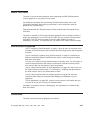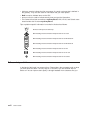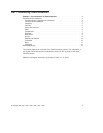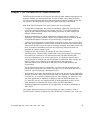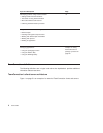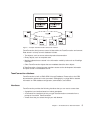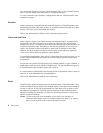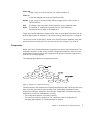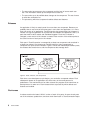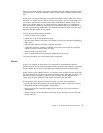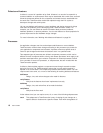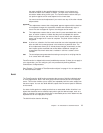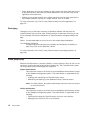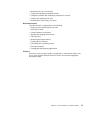You can use any interface to do your TeamConnection work, or you can switch among
them. This book usually gives instructions for using both interfaces.
For more information, see “Chapter 2. Getting familiar with the TeamConnection client
interfaces” on page 17.
Families
A
family
represents a complete and self-contained collection of TeamConnection users
and development data. Data within a family is completely isolated from data in all other
families. One family cannot share data with another.
Refer to the
Administrator’s Guide
for more information about families.
Users and host lists
Users are given access to the TeamConnection development data in a specific family
through their
user IDs
. Each family has at least one
superuser
, who has privileged
access to the family. The superuser gives other users the
authority
to perform some set
of
actions
on particular data. Depending on the authority granted to a user, that user
might in turn be able to grant some equal or lesser level of authority to other users.
However, the ability to grant authority for some actions is reserved to the superuser.
There are no actions which the superuser cannot perform.
For host-based authentication, each user ID is associated with a
host list
, which is a list
of client machine addresses from which the user can access TeamConnection when
using that ID.
A single user can access TeamConnection from multiple systems or logins. Likewise, a
single system login can act on behalf of multiple users. The set of authorized logins for
a TeamConnection user ID makes up the user’s host list.
It is also possible to authenticate users through the use of passwords, either in place of
host lists, or as an alternative form of authentication.
Refer to the
Administrator’s Guide
for more information.
Parts
TeamConnection
parts
are objects that users and tools store in TeamConnection. They
include text objects, binary objects, and modeled objects. These parts can be stored by
the user or the tool, or they can be generated from other parts, such as when a linker
generates an executable file. Parts can also be groupings of other TeamConnection
objects for building and distribution, or simply for convenient reference. Common part
actions include the following:
Create To store a part from your workstation on the server; from that time on,
TeamConnection keeps track of all changes made to the part. Or, to create a
part to use as a place holder to store the output of a build.
6 User’s Guide




